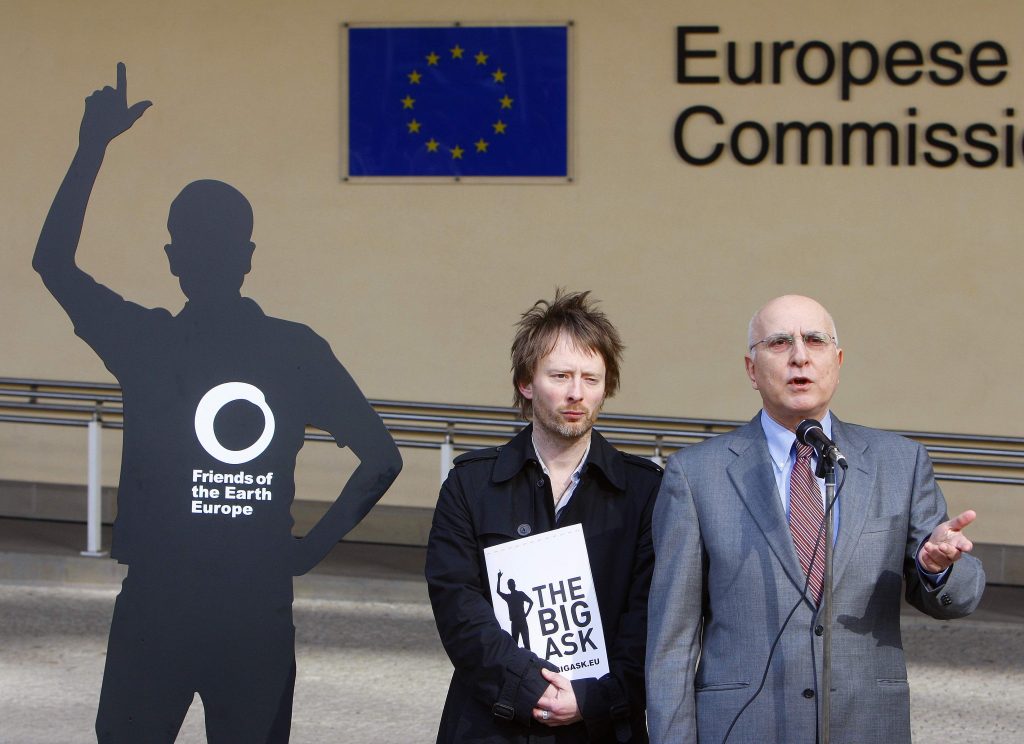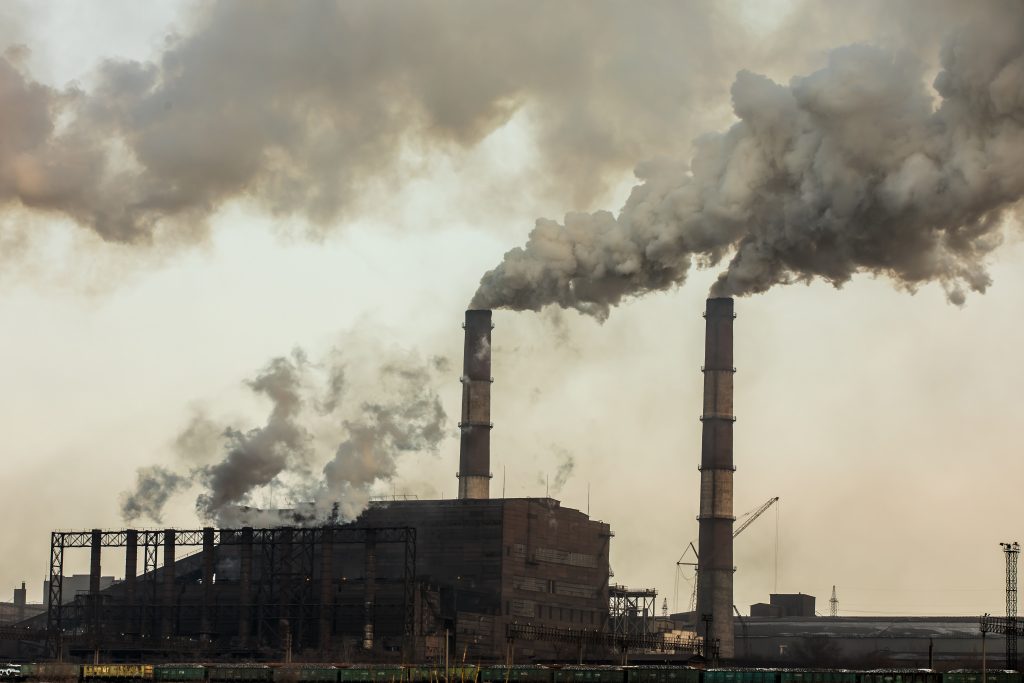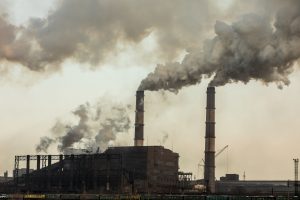As the climate crisis intensifies, Europe has taken a leading role in developing ambitious and innovative policies to cut greenhouse gas emissions. Among the most significant are the EU Emissions Trading System (EU ETS) and its lesser-known but equally vital counterpart, the Effort Sharing Regulation (ESR). Together, these instruments are essential to achieving the EU’s legally binding goal of reaching climate neutrality by 2050.

epa04944493 A cyclists makes her way past the Volkswagen plant in Wolfsburg, Germany, 23 September 2015. Volkswagen’s board began a crisis meeting on 23 September that could decide the future of board chairman Martin Winterkorn, as Europe’s biggest carmaker struggles to respond to a deepening emissions testing scandal. The carmaker’s weekend admission that it had installed sophisticated software in its diesel models aimed at beating US exhaust tests has sent shockwaves through the German auto industry. EPA/JULIAN STRATENSCHULTE
What is the EU ETS?
Launched in 2005, the EU Emissions Trading System is the world’s first and one of the largest carbon markets. At its core, the EU ETS operates on a “cap and trade” principle: it sets a maximum (cap) on the total amount of greenhouse gases that can be emitted by certain sectors. This cap is gradually reduced over time in line with EU climate targets, ensuring emissions decrease year by year.
Under the ETS, companies receive or buy emission allowances, each allowing them to emit one tonne of CO₂ equivalent. If they emit less than their allowance, they can trade the excess — creating a market incentive to reduce emissions cost-effectively. If they exceed their allowance, they face heavy fines. Most allowances are auctioned, generating revenue, though some are still given for free, particularly to sectors at risk of carbon leakage (relocation due to climate policy).

Thom Yorke (L), singer of rock band Radiohead, poses with European Environment Commissioner Stavros Dimas as they stand next to the symbol of the Europe-wide climate campaign “Big Ask”, launched by environmentalist group Friends of the Earth, in Brussels February 27, 2008. Yorke called on governments and the European Union to commit to year-on-year emission cuts in carbonic emissions. REUTERS/Yves Herman (BELGIUM)
The EU ETS has evolved through several phases:
- Phase 1 (2005–2007): A pilot phase with free allocations and modest penalties. It laid the groundwork for the system’s monitoring and trading infrastructure.
- Phase 2 (2008–2012): Introduced a tighter cap and included more countries and gases. The aviation sector was added in 2012.
- Phase 3 (2013–2020): Marked a major reform with a single EU-wide cap, more auctioning, and expanded sectoral coverage. A New Entrants Reserve supported innovation.
- Phase 4 (2021–2030): The current phase, designed to align with the EU’s climate targets, especially under the European Green Deal.
The system currently covers emissions from power and heat generation, industrial manufacturing, aviation, and as of 2024, maritime transport. These sectors account for about 40% of total EU greenhouse gas emissions, including power and heat generation, industry, aviation, and, since 2024, maritime transport. It operates across all EU member states, plus Iceland, Liechtenstein, and Norway, and is linked with Switzerland’s system.
Since its inception, the ETS has helped reduce emissions from covered sectors by approximately 47% compared to 2005 levels and has generated over €175 billion in revenues. These funds are channeled into national budgets and earmarked for the green transition — from renewable energy to low-carbon technologies.
The EU ETS: Recent Reforms and the Road Ahead
The ETS is now in its fourth trading phase (2021–2030) and has undergone several reforms under the Fit for 55 package, which aims to reduce EU-wide net emissions by at least 55% by 2030 (compared to 1990).

Key changes include:
- A tightened cap to achieve a 62% emissions reduction by 2030 (compared to 2005)
- A gradual phase-out of free allowances, especially for aviation (ending in 2026)
- The creation of a new system — ETS2 — covering road transport, buildings, and small industry, operational from 2027
- Introduction of a Social Climate Fund, mobilizing €86.7 billion (2026–2032) to ensure a just transition for vulnerable citizens
- Enhanced funding via the Innovation Fund and Modernisation Fund
With these reforms, the ETS is not only a tool for cutting emissions but also a powerful instrument for driving sustainable investment and innovation across Europe.
What is the Effort Sharing Regulation (ESR)?
While the EU ETS covers large-scale emitters, the Effort Sharing Regulation governs the remaining 60% of EU emissions, focusing on sectors not included in the ETS:
- Road transport
- Buildings
- Agriculture
- Small-scale industry
- Waste
Established in 2018 (and revised in 2023), the ESR sets binding national targets for each Member State from 2021 to 2030. These targets are calculated based on countries’ economic strength and are designed to achieve a 40% emissions reduction by 2030 (compared to 2005 levels) in ESR-covered sectors.

Lawyer of Peruvian farmer Saul Luciano Lliuya, who is suing German energy utility RWE, arguing that the company’s emissions have contributed to the melting of Andean glaciers, Roda Verheyen speaks to the press, on the day of the verdict of the high regional German court in Hamm, Germany, May 28, 2025. REUTERS/Theresa Kroeger
Whereas the ETS operates at the EU level, the ESR requires Member States to develop national policies. These may include:
- Promoting public transport or zero-emission vehicles
- Supporting building renovations
- Encouraging sustainable farming
- Expanding the use of renewable heating and cooling systems
Member States must outline their actions in National Energy and Climate Plans (NECPs) and report progress every 2 years.
Why the ESR Matters — and How It Complements the EU ETS
The European Economic and Social Committee (EESC) has welcomed the increased ambition of the ESR, calling it key to meeting the EU’s climate goals. While acknowledging that the 55% target is ambitious by global standards, the EESC warns that it may still fall short of what’s needed to limit global warming to 1.5°C, as highlighted in the IPCC’s 2021 AR6 report.
The EESC emphasizes the importance of fair and cost-effective effort-sharing, arguing that reduction targets should consider both economic capacity and relative emissions reduction costs. It also supports flexibility mechanisms — such as trading of allocations or banking emissions reductions — to help countries meet their targets.
A Two-Pillar Approach for a Climate-Neutral Future
Together, the EU ETS and the ESR form a comprehensive climate governance system:
- ETS: Market-based, covering major emitters, with revenue generation and strong financial incentives.
- ESR: Legally binding national targets, covering day-to-day sectors like transport and housing, ensuring national accountability.
Both are essential pillars of the European Green Deal and the EU’s long-term goal of achieving net-zero emissions by 2050.

While challenges remain — from ensuring fairness across Member States to minimizing social impacts — the EU’s emissions trading framework is a model of climate ambition, innovation, and policy integration. The world is watching, and what happens in Europe could well chart the path for global climate action in the decades to come.
The EESC has called for a transparent interface between the two systems and better monitoring to make all data — including flexibility use — available to the public.
A Model for the World?
The EU ETS has demonstrated that carbon markets can drive down emissions while supporting economic growth and innovation. As other countries and regions look to implement or expand their own emissions trading systems, the EU’s experience offers a roadmap—and a reminder—that climate action and economic opportunity can go hand in hand.








